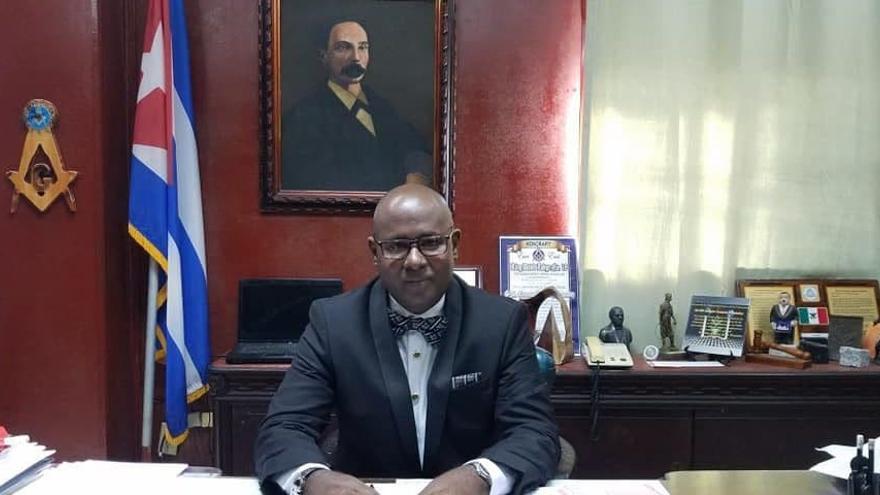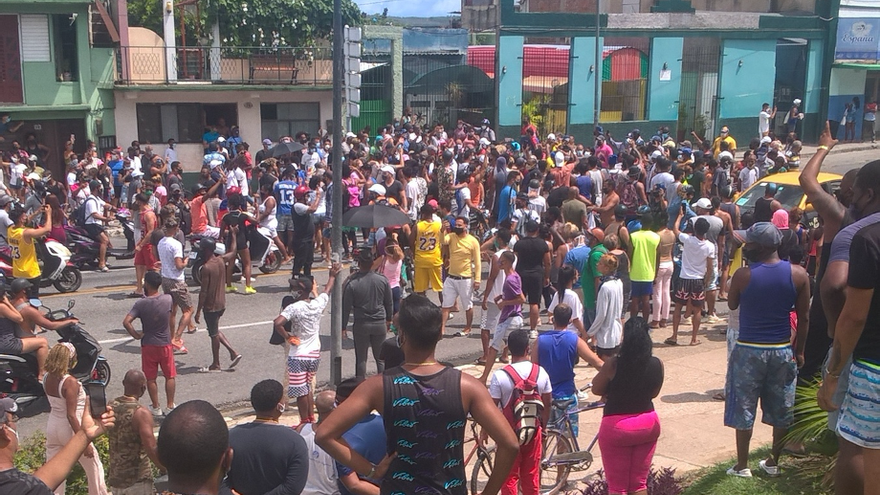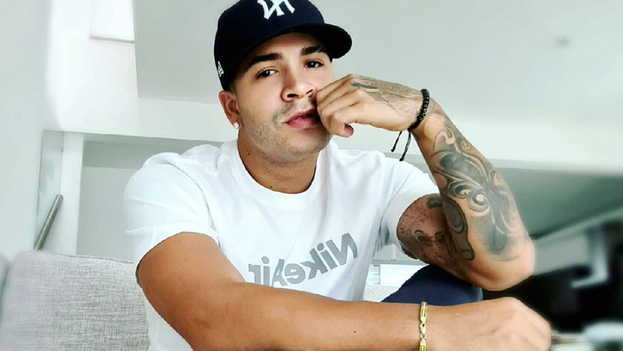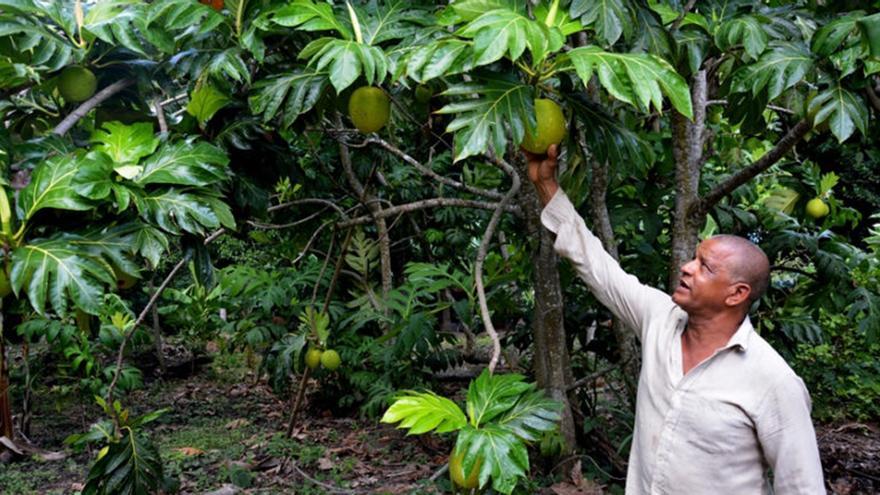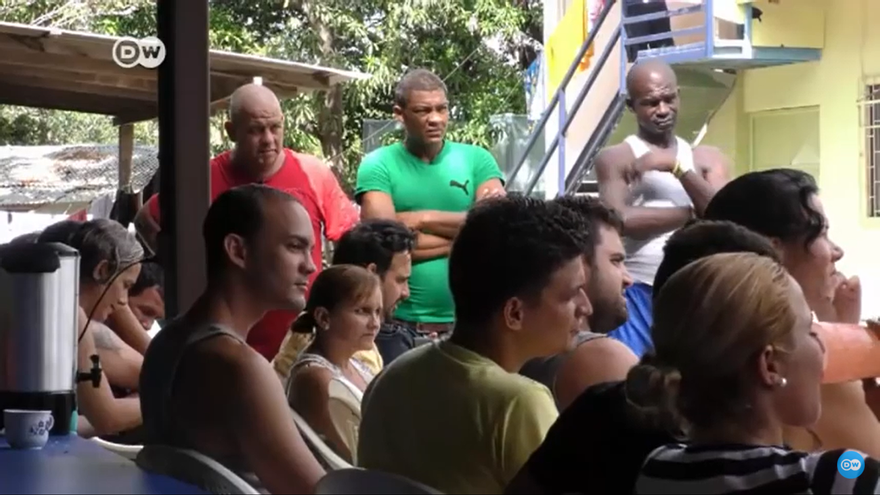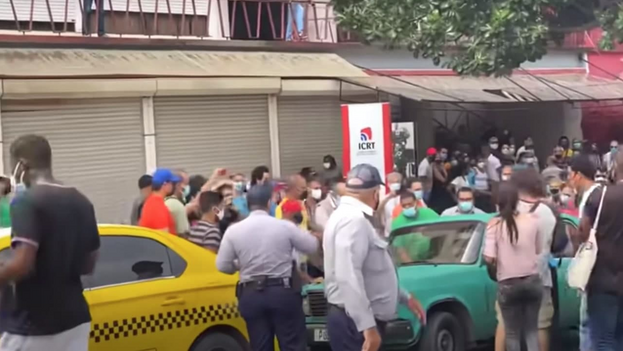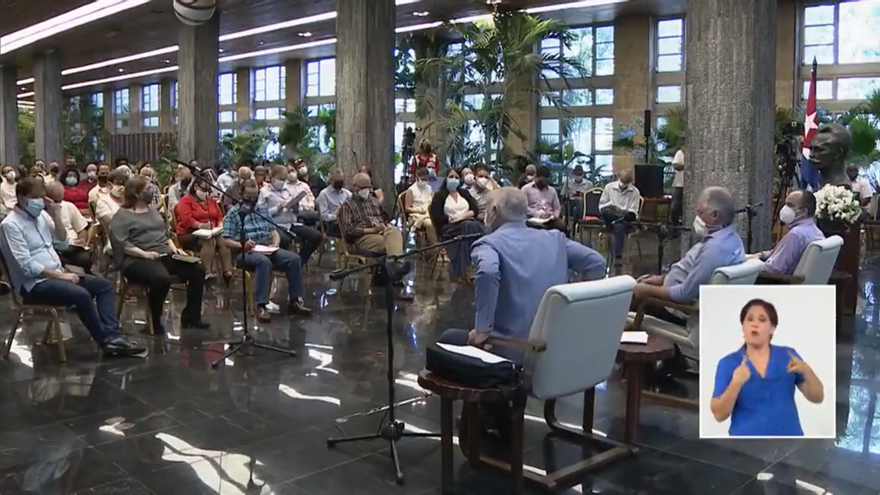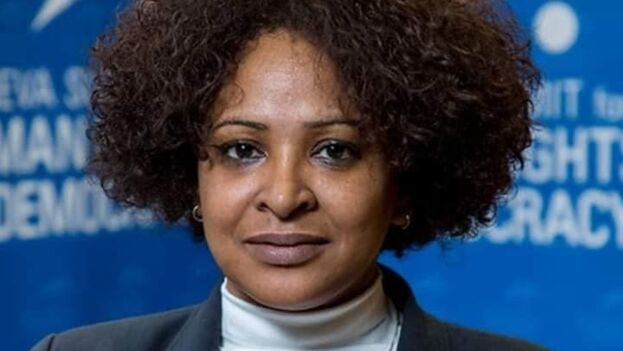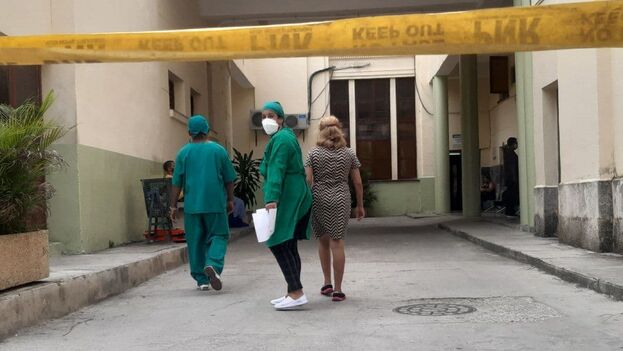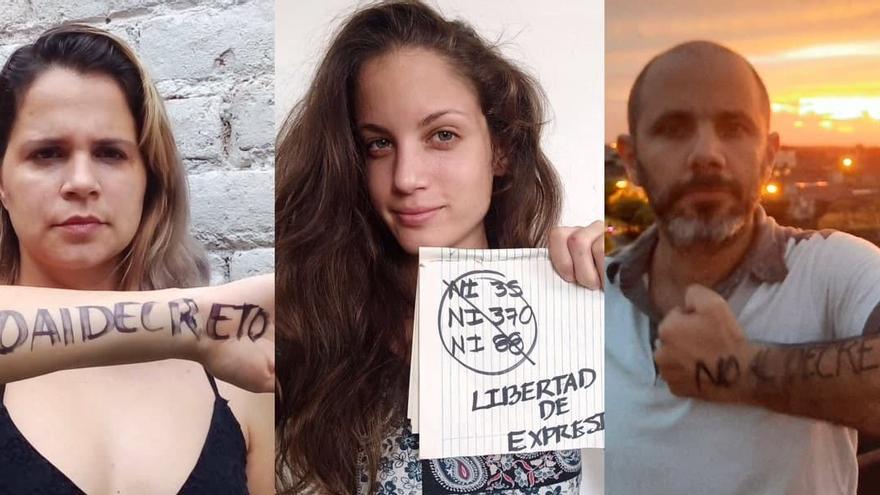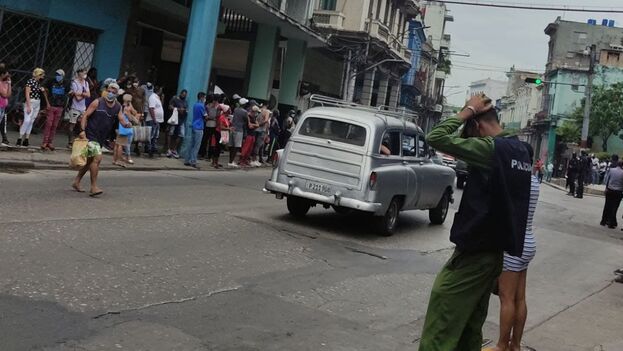
![]() 14ymedio, Juan Diego Rodríguez, Havana, 27 August 2021 – Several streets in Centro Habana woke up paralyzed this Friday morning by Cuban President Miguel Díaz-Canel’s visit to the Quisicuaba center, shortly before the rain from Tropical Storm Ida began to fall on Havana. “There is a visitor,” muttered a neighbor in the area, which had more police officers and State Security agents than there were vegetables on the shelves of the neighboring market.
14ymedio, Juan Diego Rodríguez, Havana, 27 August 2021 – Several streets in Centro Habana woke up paralyzed this Friday morning by Cuban President Miguel Díaz-Canel’s visit to the Quisicuaba center, shortly before the rain from Tropical Storm Ida began to fall on Havana. “There is a visitor,” muttered a neighbor in the area, which had more police officers and State Security agents than there were vegetables on the shelves of the neighboring market.
“The street corners crowded with of Security agents” was the preamble to the arrival of the president to the neighborhood of Los Sitio, according to the residents interviewed by 14ymedio. Even in nearby Monte Street, the informal vendors that normally abound in the portals were conspicuous by their absence this Friday, a lack that was lamented by the neighbors who had gone out in search of candles, matches and other products necessary to stay at home during the scourge of the Hurricane Ida that keeps the Cuban capital on hurricane watch.
The Cabildo Quisicuaba Sociocultural Project, located on Maloja Street, is directed by the deputy to the National Assembly of Cuba, Enrique Alemán Gutiérrez. “It is a religious association and also a community project, supposedly to help the community, distribute food, donations,” says a neighbor.
“Alemán did this religious community project and was sneaking around here and there as soon as an event started and fighting for his little bit. He spoke of the wonders of the Revolution and flattered and sucked up to continue reading
“This project raised its head extorting foreigners because that individual dedicated himself to the Yoruba religion and to making those who came from abroad holy. They made huge feasts, food of all kinds, and from that came the rivers of money he earned through these ceremonies,” the man describes. “It is a work of corruption from the very start, grabbing money from all sides.”
The neighborhood, one of the most densely populated in the capital, has for decades been an area with many housing problems, a large number of tenements and serious problems in its water supply infrastructure. Marginality, informal employment and the black market are an inseparable part of life in Los Sitios.
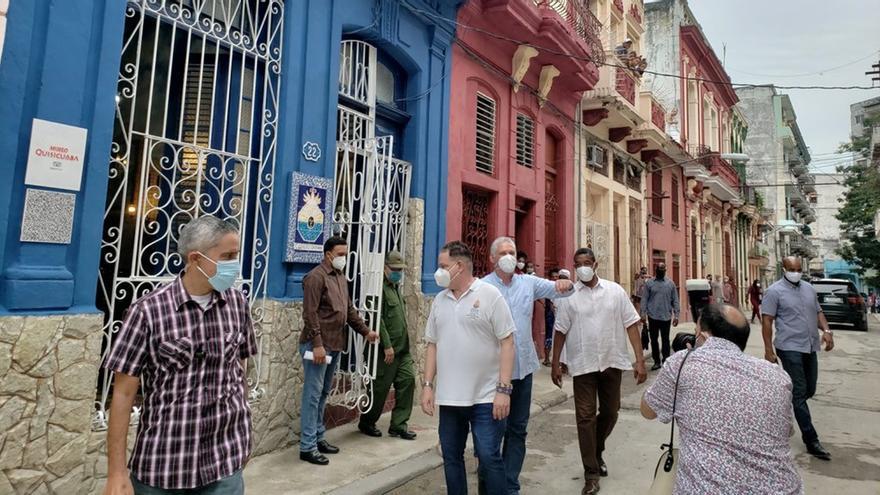
A good share of the residents in the area dedicate themselves to the purchase and resale of products from nearby stores such Ultra, the La Cubana hardware store and La Isla de Cuba. With tourism canceled due to the pandemic and mobility restrictions imposed on residents, many people have lost their way of earning a living and now survive by lining up at hard currency stores and reselling the merchandise.
“President Díaz-Canel signs the Guest Book where he recognizes the altruistic work carried out by this human sociocultural project from and to the community,” the official account of the Cuban Presidency tweeted this Friday, after announcing the visit of the president to the institution “that for more than 25 years has developed local projects” and that “includes 29 social works.”
In Quisicuaba, says another resident, “religious acts, drumming sessions and much more are held.” She speaks about Enrique Alemán Gutiérrez who is a doctor by profession and only ” practiced medicine for a short time because he had a serious problem in Public Health and was expelled,” she relates.
“Later, he was in official religious organizations and from there he ended up at the famous Summit in Panama, where Cuban civil society supposedly participated. But it was a gang of rabble, what he put together in that event was horrible, because he was one of those who led those scandals,” recalls the woman. “Oh, and also when Barack Obama was in Havana I saw him at several acts of revolutionary reaffirmation. He’s the worst.”
“They were stopping everyone who passed through that area asking what they were doing, where they lived,” a young man who walks through Monte every day to his workplace in Old Havana told this newspaper. “There were hundreds of security agents in civilian clothes sitting on the sidewalk having a Tanrico brand soda wrapped in a nylon bag and a snack, and another group was also doing the same in the Monte y Águila park,” he describes.
Shortly after Díaz-Canel left Quisicuaba, the Presidency released a video showing a group of people huddled together and not respecting the mandatory distancing to prevent contagion by covid. Along with that, where the president is clearly present, it was reported that he visited “with the population of Los Sitios, as always happens, and the population responds and accompanies him with enthusiasm and a very Cuban conga.”
The visit took place after the leader met with religious leaders and associations recognized by the Government last Tuesday. He also planned a meeting with Cuban Masons, but the Mason’s Grand Master Ernesto Zamora Fernández refused to participate. “We have decided not to attend the meeting called by the Presidency of the country, in order to preserve Masonic unity,” said the community leader in the document, released by several Masons on their social networks.
____________
COLLABORATE WITH OUR WORK: The 14ymedio team is committed to practicing serious journalism that reflects Cuba’s reality in all its depth. Thank you for joining us on this long journey. We invite you to continue supporting us by becoming a member of 14ymedio now. Together we can continue transforming journalism in Cuba.

